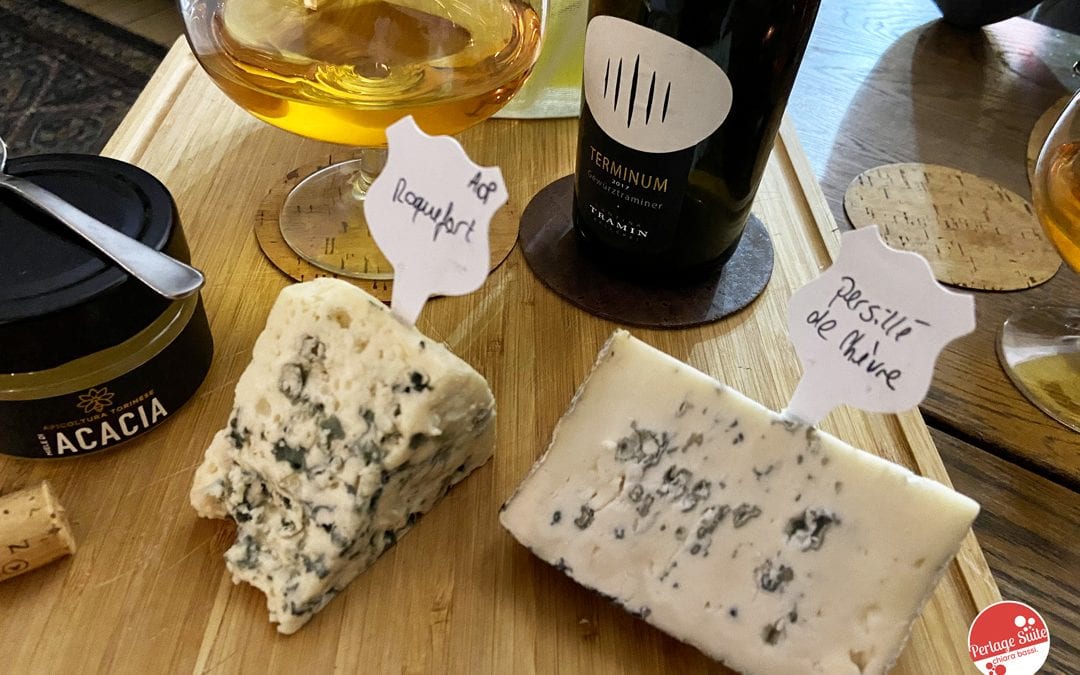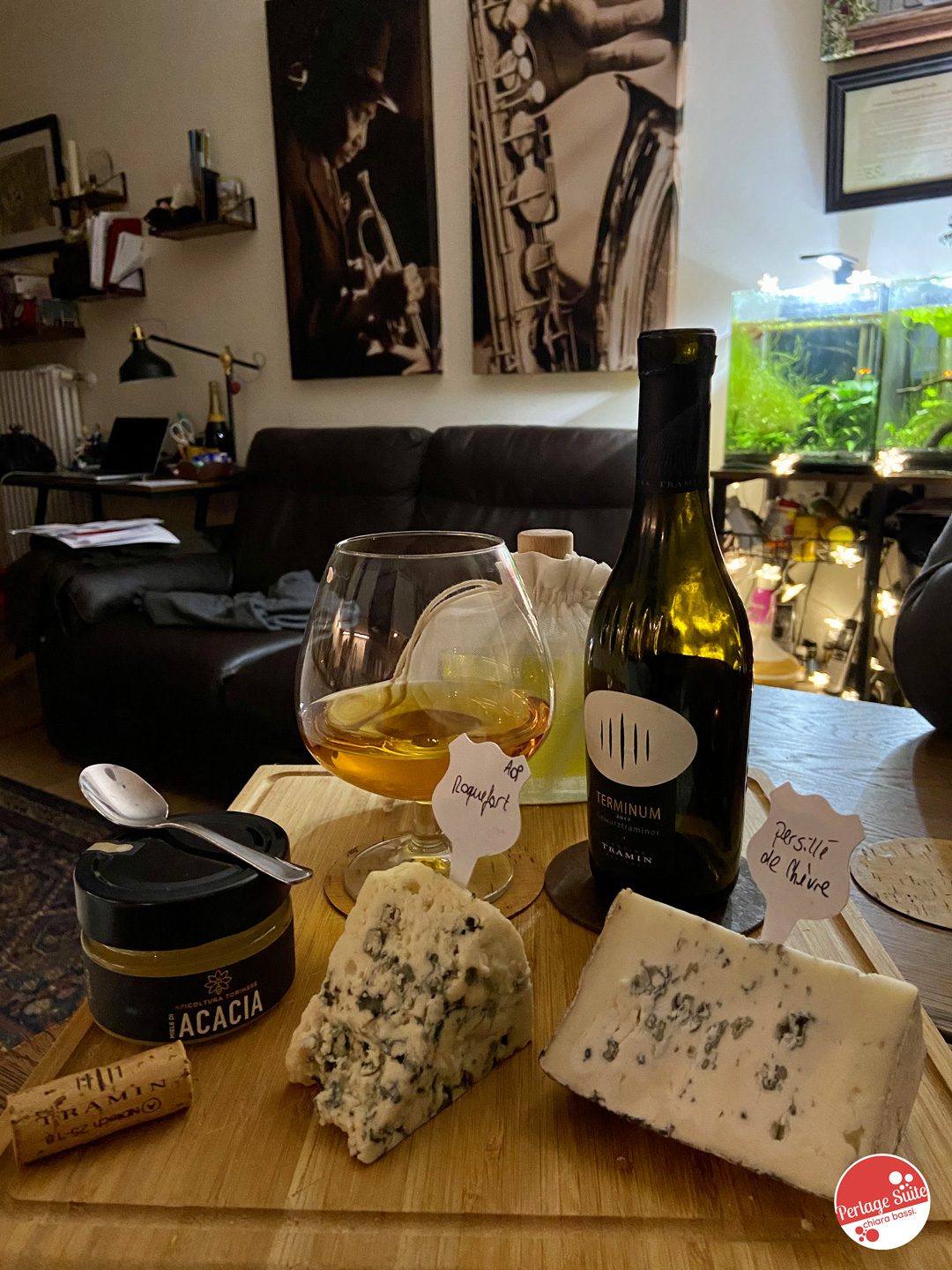The two white grape varieties I love most are riesling and gewürztraminerso I was very happy to taste the Terminum of Cantina Tramin. As a huge fan of Alsatian gewürztraminer, I was very happy to taste this one too. late harvest "homegrown'. It was now a week since I had two blue cheeses perfect in the fridge and it was really hard to resist and wait for it to arrive... but it was absolutely worth it. 🤩
Moreover, I have personally experienced how wrong it is to think and write 'blue cheeses' in a generic way, as if all blue cheeses had the same organoleptic characteristics! I will tell you about this, however, after I have told you about the Gewürztraminer Terminum 2017 of Cantina Tramin.
Gewürztraminer Terminum, Cantina Tramin: How was the 2017 vintage?
Spring 2017 had variable temperatures, but these did not interfere either with budding or flowering, which took place in line with the average of recent years. In particular, May and June were very rainy and the high humidity favoured the appearance of pathogens that required special care in the vineyards. There were alternating rather dry days that solved the problem by assisting the great work of the vine growers. Since the end of August, the days have been sunny and warm. From September, a good daily temperature range began, with warm days alternating with cool nights. A splendid autumn then, which slowed down the ripening process of the grapes and thus delayed the harvest by about a week compared to the average of previous vintages. Perhaps due in part to the special diligence of worthy men during what began as a not easy year, the harvest produced exceptionally healthy grapes with optimal physiological ripeness. The harvest took place at the end of December and the wine yield was very low, only 19 hl/ha for a total of 4,400 bottles produced.
If you like this content, subscribe to my newsletter so you don't miss a single article, or scroll down to continue reading!
Gewürztraminer Terminum, Cantina Tramin: how does it come about?
The Gewürztraminer vineyards are located at an altitude of 400/500 m above sea level and mostly face south-east. The vines, which have an average age of 20 years, sink their roots into soil consisting of lime gravel and clay, with a porphyry rock underlay. The strong temperature fluctuations of warm days influenced by the Mediterranean climate combined with cold nights with fresh mountain winds increase the sugar and phenolic concentration.
Exceptionally, the vineyard, despite being on a hillside, is not affected by the wind from Lake Garda because it is situated in a small basin. In the case of the production of this gewürztraminer, this is a great advantage because it allows the noble rot to evolve.
After harvesting strictly by hand, the grapes are placed in small containers where they macerate for about 12 hours. The pressing is very soft (1.8 bar). After decanting, the must ferments slowly in barriques for a period of 6 to 9 months. When fermentation ends, the wine matures in barriques for a further 7 to 10 months and then matures in bottles for at least 3 months before being put on the market.
Gewürztraminer Terminum, Cantina Tramin: my tasting
It is an intense golden yellow with splendid amber reflections. The nose is distinctive and intense, broad. Notes of fresh dates, jammy apricots, eucalyptus, salted caramel, lime honey, vanilla, candied pear, wax and raw butter are discernible. In the mouth, it is soft, broad, fresh, sweet and at the same time savoury, exceptionally balanced despite the very high residual sugar content (280 g/l) which makes it particularly concentrated. Very long finish reminiscent of pine nuts.
To be best valorised, I recommend pairing it with particularly intense and salty blue cheeses such as Roquefort AOP. I also tried goat's blue, but being much milder it did not balance the residual sugar of the wine in which it was totally lost.
Also perfect as a meditation wine, I absolutely do not recommend it with all desserts, with the exception of 100% Criollo chocolate. I know that dessert goes with concordance, but here we are beyond a passito as we normally understand it. To understand wines classified as sweet have a sugar content of between 50 and 180 g/l. Striving to pair this wine with a dessert would either end up giving you an overly sweet sensation or annihilate its organoleptic characteristics. Trust me, put your money on Roquefort AOP and you'll thank me....
Roquefort AOP: the perfect match
Made from ewe's milk in the south of France, it has blue-green speckles of mould that give it a strong, tangy, salty and distinctive smell and flavour. For me, Roquefort AOP is a symbol among French cheeses, so much so that it has been mentioned in historical texts since 700 AD. In 1666, Charles VI felt the need to protect its production by granting the inhabitants of Roquefort-sur-Soulzon the exclusive right to ripen it, thus creating a sort of PDO ante litterem. Recognition was then given to it in 1925, making it the first French designation of origin. Production has remained unchanged to this day.
The raw milk for the production of this Roquefort comes from the 'Lacaune' breed of sheep. The curd formed for its manufacture is cut after receiving Penicillium Roqueforti, which allows the blue veins of the cheese to develop. In the case of this producer, the mould is grown on rye bread according to an old recipe and this gives it an even more characteristic aroma. The cheese is then drained, salted and placed in natural cellars/caves that allow ventilation and constant humidity where it spends several months.
If you'd like to let me know if you've tasted them and what you think in a comment down the page!
Cheers 🍷
Chiara
P.S. Thanks to Amaury Jimenez (@amaury.fromager) for these two wonderful goodies... tomorrow I will taste another one and can't wait!



